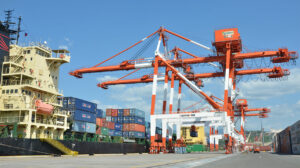TWELVE core infrastructure projects that will develop the Luzon Economic Corridor are expected to cost P2.13 trillion, the National Economic and Development Authority (NEDA) said.
“NEDA presented 21 infrastructure projects for consideration during the meeting for the Luzon Economic Corridor in May. Of the 21, 12 have a combined cost estimate of P2.126 trillion,” NEDA Undersecretary Joseph J. Capuno said via Viber.
The 12 projects are the Subic-Clark-Manila-Batangas Railway, the Bataan-Cavite Interlink Bridge, the Subic Bay (Redondo-Ilanin) bridge, the Central Luzon Link Expressway Phase II, North Luzon East Expressway, the Laguna Lakeshore Road Network Development Phase I;
The Central Luzon Bus Rapid Transit, the Manila Bay-Pasig River-Laguna Lake Ferry System, the Kalaanan Irrigation Project, the North-South Commuter Railway, the New Clark City Extension of the railway, and the Southern Batangas Airport.
The cost of the other 9 projects has yet to be determined, Mr. Capuno said.
These include the Calamba-Batangas Railway, the Clark International Airport Infrastructure Expansion Phases I and II, the Clark Urban Transport System, the Luzon Bypass Infrastructure Project, the ICT Infrastructure of New Clark City, the New Clark City Industrial Estates, the National Food Storage Terminal, and the Poro Point Seaport Modernization.
The Luzon Economic Corridor is being undertaken via a trilateral agreement among the Philippines, US and Japan. It is part of a broader collaboration supported by the G7 Partnership for Global Infrastructure and Investment.
It aims to strengthen connectivity in key Luzon sites such as Metro Manila, Batangas, Subic and Clark.
Infrastructure linked to the proposed corridor will help bolster growth in the various locations along the corridor, NEDA Secretary Arsenio M. Balisacan said.
“There will be economies of scope (and) economies of scale in one place especially if these are supported with adequate infrastructure,” he told a briefing last week.
The government is also planning to expand the corridor further south in Luzon, Mr. Balisacan added.
“Because it’s becoming an industrial corridor, we want to connect this railway all the way to Batangas (with a) spur going to Bicol… so that the industries there are interconnected with the rest of Luzon.”
The cost of setting up railways along the proposed corridor is estimated at $7 billion, Special Assistant to the President for Investment Frederick D. Go said last month.
The steering committee for the Luzon Economic Corridor is expected to meet this month to finalize the priority projects, Mr. Capuno said. — Beatriz Marie D. Cruz
